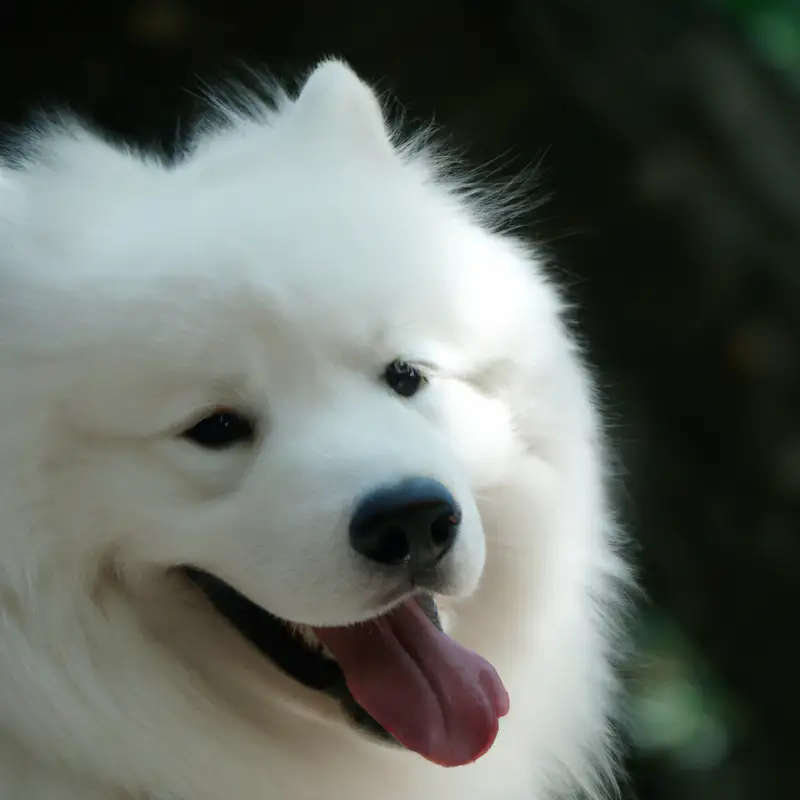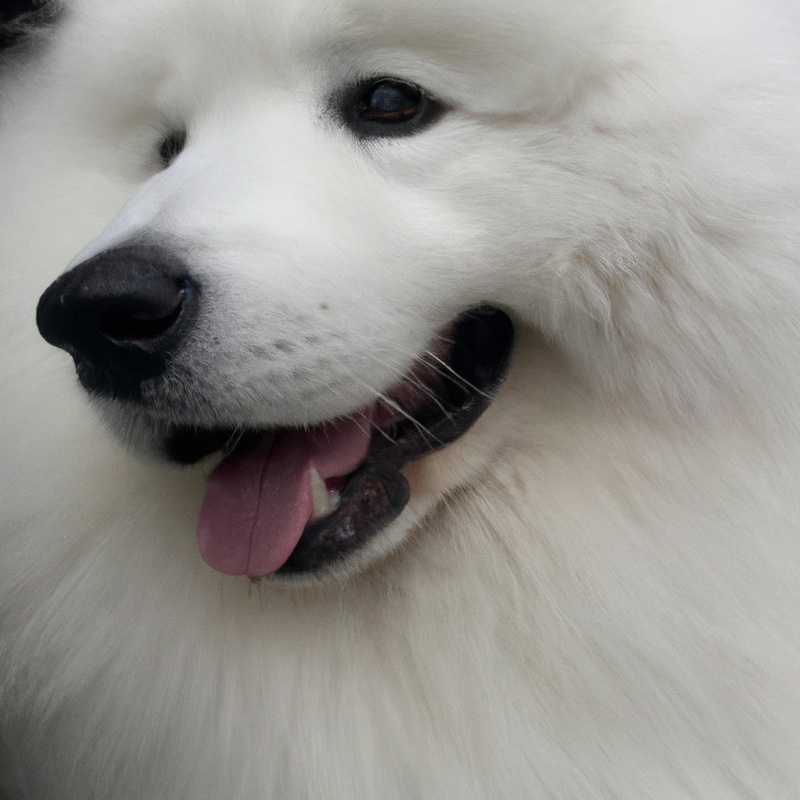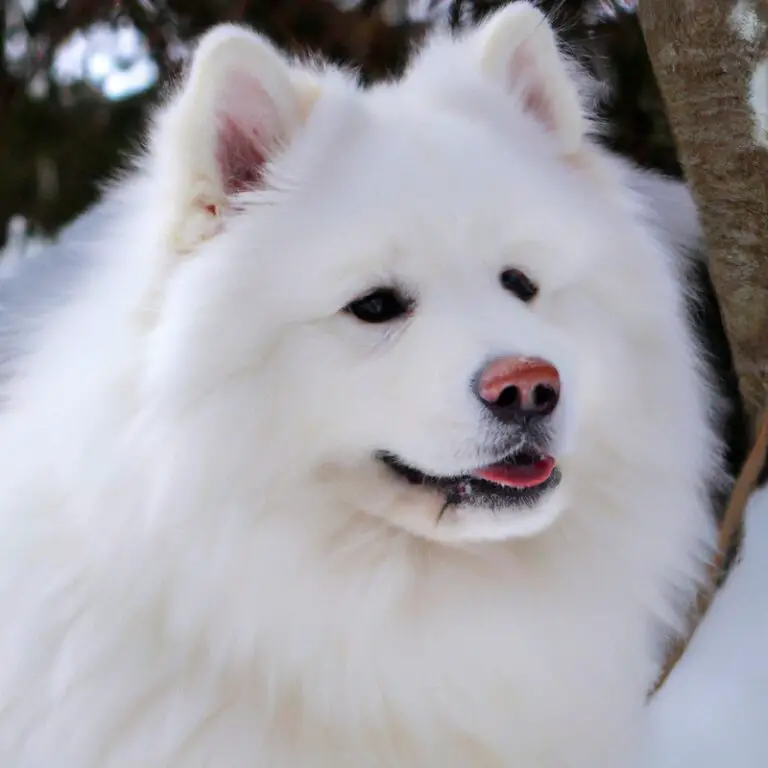Can Samoyeds Be Trained For Search And Rescue Tasks?
Key Takeaways:
- Samoyeds can be trained for search and rescue tasks successfully.
- Their high intelligence and trainable nature make them suitable for search and rescue work.
- Samoyeds have good tracking abilities and are adept at locating missing persons.
- With proper training and socialization, Samoyeds can excel in search and rescue operations.
Are you in awe of the gentle and majestic Samoyed breed?
Have you ever wondered if these fluffy companions can be more than just family pets?
Well, let me tell you, Samoyeds possess remarkable qualities that make them great contenders for search and rescue tasks.
Their intelligence, adaptability, and unyielding loyalty are just some of the traits that set them apart.
In this article, I will walk you through the training process, the specific skills they bring to search and rescue efforts, and provide helpful tips to help you successfully train your Samoyed for this crucial role.
Get ready to embark on an extraordinary journey with your furry friend!
| Samoyeds | Other Search and Rescue Dogs | |
| Temperament | Intelligent, friendly, eager to please | Varies depending on breed |
| Size | Medium to large | Varies depending on breed |
| Physical Abilities | Strong, agile, good endurance | Varies depending on breed |
| Trainability | Generally trainable with proper training and socialization | Varies depending on breed and individual |
| Scenting Ability | Good sense of smell, but not as strong as some other search and rescue breeds | Varies depending on breed |
| Availability | Relatively common | Varies depending on breed |
| Overall Suitability | Can be trained for search and rescue tasks, but may not be as ideal as some other breeds | Depends on specific requirements and training methods |
Overview of Samoyeds
Brief history and characteristics of Samoyeds
Samoyeds are an ancient breed originating from Siberia.
They were bred by the Samoyede people for herding reindeer, pulling sleds, and keeping their families warm at night.
These friendly and sociable dogs have a strong work ethic and a desire to please.
With their dense double coat, Samoyeds are well-suited for cold climates, but they also adapt well to warmer environments.
They have a distinctive “smile” due to the upturned corners of their mouths and are known for their gentle and friendly nature.
Samoyeds are intelligent and trainable, making them great candidates for search and rescue tasks.
Their loyalty and cooperation with humans, along with their physical capabilities, make them excellent partners in such demanding situations.
They are also known for their ability to be gentle with children and get along well with other animals.

Temperament and traits that make Samoyeds suitable for training
Samoyeds possess a friendly and sociable temperament, which makes them great candidates for training.
They have a strong desire to please their owners, making them eager and motivated learners.
This breed is known for their intelligence and problem-solving skills, enabling them to pick up new tasks quickly.
Additionally, their high energy levels and endurance make them well-suited for physically demanding search and rescue tasks.
Their adaptability and versatility further contribute to their suitability for training in different environments and situations.

Training Samoyeds for search and rescue tasks
Importance of training dogs for search and rescue
Training dogs for search and rescue tasks is crucial for their effectiveness in locating missing individuals. Well-trained search and rescue dogs possess the ability to navigate challenging environments, follow scent trails, and provide assistance in locating people trapped under debris.
Through proper training, these dogs develop the necessary skills, discipline, and focus required for successful search and rescue operations.
Training also helps to enhance their obedience, agility, and communication with their handlers, enabling them to work efficiently as a team. Additionally, ongoing training ensures that these valuable animals remain prepared and capable of responding to emergencies effectively.

Specific qualities of Samoyeds that can contribute to search and rescue efforts
Samoyeds possess specific qualities that make them well-suited for search and rescue tasks.
Firstly, their strong sense of smell enables them to detect and track scents, which is essential in locating missing persons or objects.
Secondly, their thick double coat provides insulation in extreme weather conditions, allowing them to handle harsh environments during search operations.
Additionally, their friendly and gentle nature makes them ideal for establishing a comforting connection with individuals in distress.
Their intelligence and trainability further contribute to their effectiveness in search and rescue efforts.
Basic obedience training for Samoyeds
Basic obedience training for Samoyeds is an important step in their overall development. Start with essential commands like sit, stay, and come.
Using positive reinforcement, reward your Samoyed with treats and praise when they follow the commands correctly.
Consistency is key, so practice these commands daily in short sessions. Socialization is also crucial, exposing your Samoyed to different people and environments to help them become well-rounded and adaptable.
Lastly, be patient and understanding throughout the training process, as every dog learns at their own pace.
Advanced training techniques for search and rescue tasks
When it comes to advanced training techniques for search and rescue tasks, there are several key strategies to consider.
Proper scent training is crucial, as it helps your Samoyed identify and track scents effectively.
Using positive reinforcement methods, such as rewards and praise, can motivate your dog and enhance their focus.
Continual practice in different environments and scenarios helps to improve their adaptability and problem-solving skills.
Keep training sessions short and varied to maintain engagement.
By consistently using these techniques, you can enhance your Samoyed’s abilities in search and rescue tasks.
Steps to train Samoyeds for search and rescue
Acclimating Samoyeds to various environments and situations
Acclimating Samoyeds to different environments and situations can be done with patience and consistency. Start by introducing them to new people, places, and experiences gradually.
Socialize them from a young age and expose them to various sounds, sights, and smells.
Allow them to explore at their own pace and reward positive behavior. Practice obedience training in different locations to help them become comfortable in new environments.
Remember to always prioritize their safety and well-being.
Introducing scent detection training
Introducing scent detection training is an essential part of preparing a dog for search and rescue tasks. The goal of this training is to develop the dog’s ability to locate and indicate the presence of specific scents, such as humans or certain objects.
By gradually introducing scent detection exercises and rewarding the dog for successful finds, you can build their skills and confidence in this area.
It’s important to start with simple scents and gradually progress to more complex searches, maintaining a positive and consistent training approach throughout.
Building skills in tracking and trailing
To build skills in tracking and trailing, focus on these key steps:
- Start with basic obedience training to establish a strong foundation.
- Introduce scent work exercises, using a specific scent for your Samoyed to track.
- Gradually increase the difficulty of the scent trails, incorporating distractions and varied terrains.
- Use positive reinforcement techniques, rewarding your dog for successfully tracking and trailing scents.
- Practice regularly to maintain and improve your Samoyed’s skills in tracking and trailing. Remember to have fun and enjoy the process together!
Teaching Samoyeds to alert and indicate when they find someone
To teach Samoyeds to alert and indicate when they find someone, consistent and positive reinforcement training is key. Start by introducing a command, such as “find” or “search,” and reward the Samoyed every time they successfully locate a person.
Gradually increase the difficulty by hiding the person in different locations or adding distractions.
Use praise and rewards to reinforce the desired behavior and gradually fade out the rewards as the Samoyed becomes proficient. Consistency and patience are key in training Samoyeds for this important task.
Challenges and considerations
Physical limitations and endurance of Samoyeds for search and rescue tasks
Samoyeds have certain physical limitations that may affect their ability to perform search and rescue tasks. Their thick double coat, which helps them withstand harsh cold weather, can make them more prone to overheating during strenuous activities.
Additionally, their size and build may not be ideal for navigating through tight spaces or climbing over obstacles.
While Samoyeds are generally an active and energetic breed, their endurance may not match that of breeds specifically bred for search and rescue work. Therefore, it is important to carefully assess their physical capabilities and consider alternative roles or tasks that may better suit their strengths.
Potential distractions and ways to manage them during training
During training, potential distractions can be a challenge.
To manage them effectively, you can:
- Start in a controlled environment: Begin training in a quiet, familiar space before gradually introducing distractions.
- Gradually increase difficulty: Slowly expose your Samoyed to distractions while reinforcing desired behaviors. This helps build focus and resilience.
- Use positive reinforcement: Reward your dog for staying focused despite distractions, reinforcing their good behavior.
- Manage the environment: Minimize distractions when starting training and gradually introduce them as your Samoyed becomes more skilled.
- Be patient and consistent: Training takes time, so stay calm and consistent while managing distractions. Practice regularly to reinforce training effectiveness.
Emotional and mental stimulation for Samoyeds during training
During training, it is important to provide emotional and mental stimulation for Samoyeds. This helps to keep them engaged, motivated, and focused.
One way to do this is by using positive reinforcement, such as treats and praise, to reward desired behaviors.
Another method is to incorporate interactive toys and games that stimulate their problem-solving skills. Additionally, including variety in training sessions and setting new challenges can help prevent boredom and keep their minds active.
Remember to always tailor the training to your individual Samoyed’s needs and preferences.
Tips for successful training
Consistency in training sessions
Consistency is key in training sessions.
It’s important to establish a regular training schedule and stick to it.
When you consistently work with your Samoyed, they learn faster and retain information better over time.
Consistency helps build a strong foundation of skills and behaviors.
Remember to use the same cues and commands consistently, as well as offering rewards consistently for desired behavior.
Training sessions should be frequent but short, focusing on one skill at a time.
By maintaining consistency, you’ll see progress and success in your training efforts.
Positive reinforcement techniques
Positive reinforcement techniques are highly effective when training Samoyeds for search and rescue tasks.
Here are a few key techniques to keep in mind:
- Reward-based training: Reward your Samoyed with treats, praise, or play whenever they exhibit the desired behavior during training sessions.
- Clicker training: Use a clicker to mark the exact moment your dog performs the desired behavior, followed by a reward. This helps your Samoyed associate the clicker sound with positive reinforcement.
- Consistency: Be consistent with your training cues and rewards. This will help your Samoyed understand what is expected of them and reinforce good habits.
- Patience and persistence: Remember that training takes time and effort. Stay patient and persistent, providing positive reinforcement for small steps towards the desired behavior.
By using positive reinforcement techniques, you can motivate and encourage your Samoyed to excel in search and rescue tasks.
Happy training!
Building a strong bond with your Samoyed
To build a strong bond with your Samoyed, spend quality time together every day.
Engage in activities that they enjoy, such as long walks or playing fetch.
Use positive reinforcement during training sessions to create a positive association.
Maintain consistency in your interactions and provide frequent socialization opportunities with people and other animals.
Regular grooming and vet visits also help strengthen the bond.
Remember, patience and love are key to developing a strong and trusting relationship with your Samoyed.
Patience and persistence in training process
Training a dog requires patience and persistence. It’s important to remember that learning takes time and every dog is different.
Be consistent in your training methods and set clear expectations.
Take small steps and reward your dog for their progress. If they make a mistake, don’t get discouraged.
Stay calm and continue working with them.
The key is to stay committed and not give up. Training is a journey, and with patience and persistence, you can achieve great results.
Frequently Asked Questions (FAQs)
Can any Samoyed be trained for search and rescue tasks?
Yes, any Samoyed can be trained for search and rescue tasks. Samoyeds are intelligent, strong, and have a strong work ethic.
They are known for their sledding abilities and have been used in search and rescue efforts in cold climates.
With proper training and socialization, a Samoyed can excel in search and rescue tasks. It’s important to start their training early and use positive reinforcement methods.
Consistency, patience, and plenty of practice will help them develop the necessary skills for search and rescue work.
At what age should training for search and rescue tasks start?
Training for search and rescue tasks should start as early as possible, ideally around 8 to 12 weeks of age.
It’s important to begin with basic obedience training and gradually introduce search commands and tasks.
Early training helps develop the necessary skills and establishes a strong foundation for more advanced training as the dog grows.
Regular training sessions, consistency, and positive reinforcement are key to effective training at any age.
Can Samoyeds be trained alongside other breeds for search and rescue tasks?
Yes, Samoyeds can definitely be trained alongside other breeds for search and rescue tasks.
Their friendly and sociable nature, combined with their intelligence and endurance, make them well-suited for this type of work.
While they may not have the same level of natural instinct as some other breeds, with proper training and socialization, they can become valuable members of a search and rescue team.
It’s important to start their training early and be consistent in your approach.
Also, remember that each dog is unique, so be sure to tailor the training methods to suit your Samoyed’s individual needs.
How long does it take to train a Samoyed for search and rescue tasks?
Training a Samoyed for search and rescue tasks can take anywhere from 6 months to 2 years, depending on various factors.
It requires consistent training, patience, and dedication.
Factors such as the dog’s age, temperament, previous training experience, and the complexity of the tasks will all play a role in determining the training duration.
It’s important to remember that every dog is unique, and training progress can vary.
Regular practice, positive reinforcement, and a strong bond with your Samoyed will greatly aid in the training process.
Are there any certifications available for search and rescue trained Samoyeds?
Yes, there are certifications available for search and rescue trained Samoyeds. One well-known certification program is through the National Association for Search and Rescue (NASAR).
They offer the Canine SARTECH certifications, which include levels such as Canine SARTECH I and Canine SARTECH II.
These certifications test the dog’s abilities in areas like trailing, area search, and human remains detection. Other organizations such as the American Kennel Club (AKC) also offer certifications for search and rescue dogs.
Final Verdict
Samoyeds can indeed be trained for search and rescue tasks.
Their natural intelligence, strong sense of smell, and friendly and trainable nature make them ideal candidates for this type of work.
By following the proper training techniques, such as acclimating them to various environments, teaching scent detection, and building tracking and trailing skills, Samoyeds can become valuable search and rescue dogs.
While there may be challenges along the way, with consistency, positive reinforcement, and a strong bond, Samoyeds can excel in this important and life-saving role.
Rest assured, training your Samoyed for search and rescue tasks is not only possible but highly rewarding.







